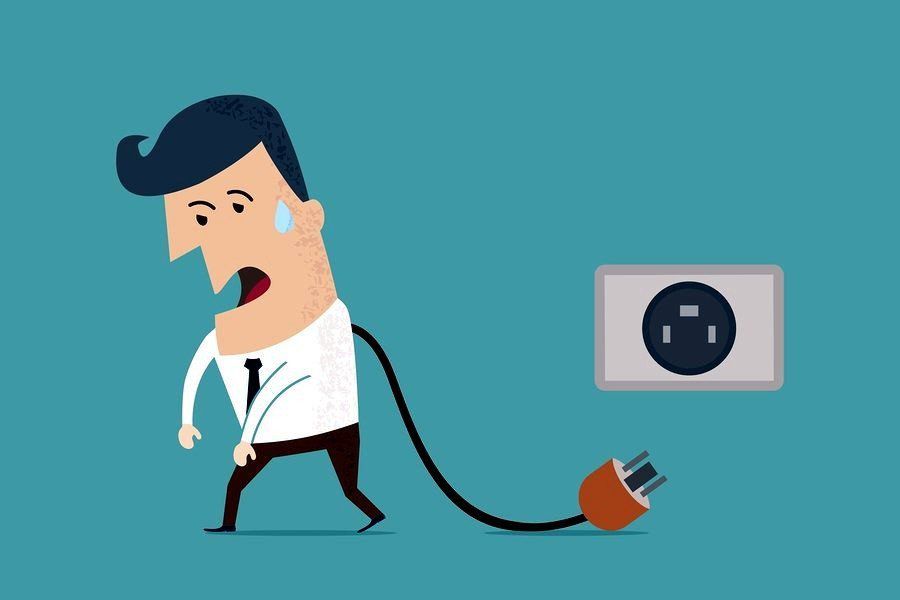4 Easy Ways To Speed Up Your Website
The time it takes your website to load can be the difference between that visitor becoming a client and just staying a visitor. There are a number of things you can do to speed up your website, even if you have no real technical experience with websites.
Our SEO expert uncovers the 4 easy steps you can take to increase the speed of your website.
Websites act as a shop window to passing visitors, and more often than not these visitors will come across your website either through a search engine like Google, or a directory website like Yell.com or Yelp. Once they've clicked on your website they have to wait for the page to load on their browser, but will they have the time to wait for your page to load? Over half of users will leave your website after just 15 seconds. If your website hasn't loaded by then, then the chances are your visitor will leave never to return.
But what can you do to help make your website load everything on the page within those 15 seconds? Well first let's identify what I actually mean when I ask the question: “has your website loaded within 15 seconds”. When you go to a website in your browser, there will be a status bar of some kind that moves across from left to right.
This is essentially a loading bar, and it indicates how much of the site it has loaded into your web browser and how much it thinks it has left. The browser won't know how much of the website has left to load until the server your website is on finishes passing the website to the browser. Once the server has passed all the website files to the web browser, the website is then displayed!
So now that you know what that term means, we can move on to the four easy ways you can speed up your website!
Step 1: Minimise the size of photos and graphics
When the internet was first released, graphics were hardly seen. It was all text, very informative, and very bland. Now though websites include moving animations, videos, super-high-resolution images that create an environment for a user to interact with beyond just reading the text. However, this new media-rich content has to be loaded on to your website, and this can be one of the main causes of slow website loading times. So what can you do to reduce the time spent waiting for this content to load?
When you upload a photo, first start by opening it in some image application like Photoshop (Paid/Free Trial), Paintshop Pro (Paid/Free Trial) or GIMP (GNU Image Manipulation Program, and it's free). Once opened you can reduce the actual size of the image. Now how small you make the image will all depend on where that image will be placed. If it's going to be the background image of your website, an image width of about 1920px will be sufficient. If however, the image is going to be used as part of some content such as a blog post, for example, you may want to reduce the image width to about 500px/600px.
Once the image has been resized, how you save the image can also be crucial to how quickly the image will load on your site. Make sure that you select JPG as the file format, and make sure that compression is set to between 90-95%. This compresses the image, meaning that while it will still open to the size you've set it, the actual size of the file will be much smaller than the original. This is an absolute must if you are uploading images from a digital camera or mobile phone.
Top Tip: It can be very tempting to upload an image straight from a digital camera or mobile phone to your website. This, however, can impact severely on your website's load times! The photos taken by either device will be large, in the region of between 4MB through to 10MB! The average size of an image on a website should be around 200KB depending on the size of the image. Following the steps above means, you can achieve a 95% reduction in size!
Step 2: Reduce The Number Of “Plugins” Your Website Uses
A lot of websites use “plugins” to provide either an enhanced experience to the website visitor or for the website owner to track what a user does on their website. They can be very beneficial to a website, but they can also be a huge problem as they can increase the time your site takes to load.
I would absolutely love to be able to tell you what plugins your website should use, but all sites have different needs and different target markets. So this really is up to you in regards to what plugins you deem important enough to keep and what plugins should be removed. If your website is built on WordPress or another Content Management System (CMS) then it'll be quite easy to deactivate those plugins and see how quickly your website loads.
Top Tip: If your website isn't using WordPress, or you don't know what your website is running on, you can speak to us here at Wootton SEO and we will be able to tell you what CMS your website is running – for FREE! You're more than welcome to ask us and we will be able to help you find out what your website is running on!
Step 3: Avoid Hosting Your Website Outside Of Your Target Country
I have seen this happen an awful lot without any sign of the problem actually improving. I will see website owners come to Wootton SEO asking for ways to improve the speed of their website or to improve their website's ranking on search results. One of the first things we check is to see where their website server is located, and a lot of the time it will turn out their website for their Flower Shop in Kent is actually hosted in America.
Why is this an issue? Well, this can impact your website in two ways. The first way is that Google and other search engines use your websites hosting location as an indication as to what part of the world your website should be targeting. This doesn't mean that if your website is hosted in America or France that you won't show up in UK search results, but it does mean it won't rank as highly as other sites hosting in the UK. While Google offers a service through its webmaster tools that allows you to set your target country, it's always best to have your website hosted in that country instead.
The other way it impacts your website is that it will be further away from your target audience. This means it will take longer for that person to load your website through their browser. We conducted some tests on a customers website that was originally in the USA, and it loaded around 20% quicker when it was moved to the UK compared to its original American location. Which leads me on to my last step...
Step 4: Avoid Using “Shared Hosting” Or “Cheap” Website Hosting
People can be drawn to web hosting on price alone, and if that suits their business plan to keep costs low then so be it. However, not a lot of consideration is given to what type of hosting the website will be run on. There are various types, but the main two are “shared” hosting and “dedicated” hosting. But what's the difference between the two?
Shared hosting does what it says on the tin. Your website shares its space with other websites on that server. This is usually the cheapest option, but it's not uncommon for a website to be on a server with over 3,000 other websites. This means you have no control over the 2,999 websites and their content. If those websites are slow, then the server on a whole will start to slow down. So when your website is accessed it could already have a slow start because of your shared hosting.
Dedicated servers are more expensive, but they will only ever be used by your website or any other site you want to put on there. This means you can be confident that no other website will impact the performance of your own website on a dedicated server. What's more, you usually just pay for the dedicated server itself, so if your company has more than one website you can have them all on that server to reduce costs but also improve the speed of all your company's websites.
Top Tip: If you want to know whether your website is on a shared or dedicated server, contact the company who host your site or the person who looks after it to find out. If you're unable to do this then you can contact Wootton SEO and we can help you find out where your site is being hosted!
In Conclusion
There are many factors that can affect how fast your website loads for visitors and potential clients, but the four points above are four of the most key factors that determine your website's speed. While these four points will address key areas you can control, there are other factors such as the device the user is viewing your website on and the speed of their internet that can affect loading times as well. However, the more you can do on your side to make your website load fast, the more you reduce the impact of these external factors.
If you're unsure as to how your website is performing, you're more than welcome to contact either myself or Wootton SEO and ask us to take a look. We can work out whether your website is on shared hosting or not, where your website is actually located, and how fast it will load for your target market.

/image%2F3742563%2F20191108%2Fob_9a6279_peterwootton.jpg)








/https%3A%2F%2Fassets.over-blog.com%2Ft%2Fcedistic%2Fcamera.png)
/image%2F3869246%2F20210225%2Fob_21448a_seo-optimise.jpg)
/image%2F3869246%2F20210225%2Fob_1184de_freelance-designer.jpg)
